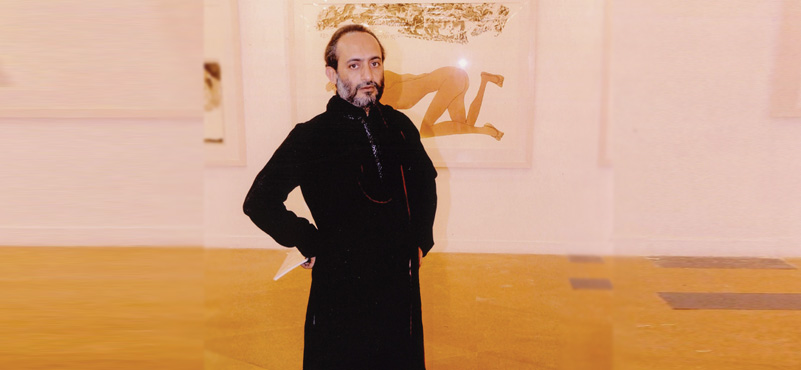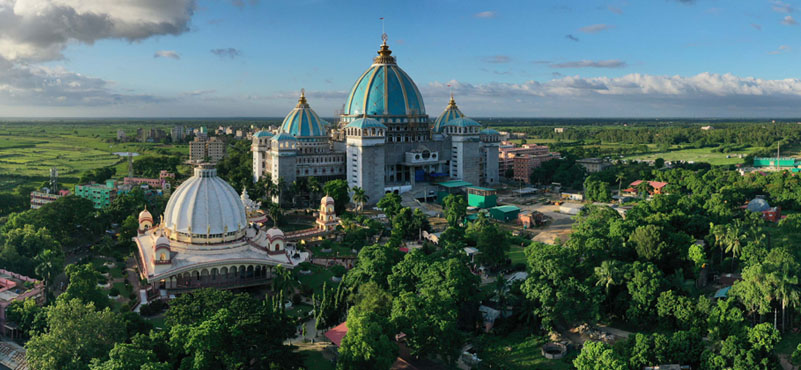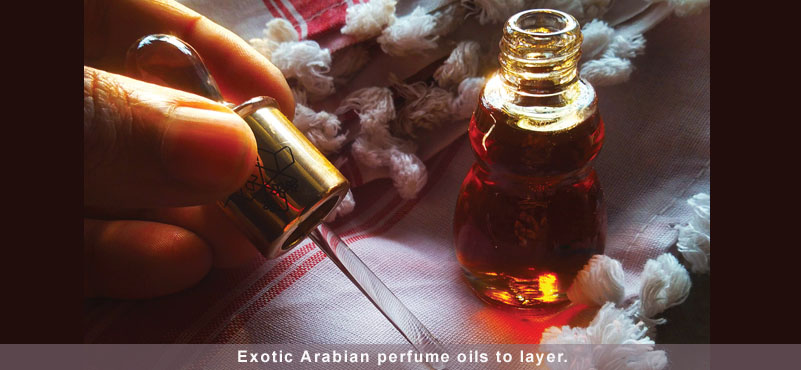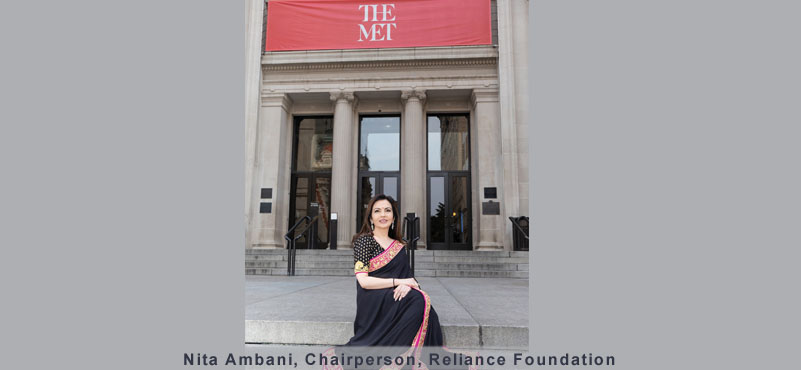He has been on the scene long enough; painted, exhibited and received numerous accolades. Today, he feels the art scene has taken a turnaround. For all the new opportunities, pure art is beginning to suffer! Excerpts from a free-wheeling interview.
What is new at your end? Or, rather, anything new that you have been up to? From painting you had taken on photography, some time back.
Since last year I have been experimenting with division of space within the canvas, using shapes such as triangles, circles, rectangles, etc. Since this is new to me, I am excited about it. The forms and shapes are giving rise to new dimensions. The emergent colours are also different from my previous palette. When I draw the first shape on the canvas, the canvas itself dictates the other elements to be made, and that way I create the balance of negative and positive space. It is a play with lot of discipline, because if the balance is not struck, then all the effort is futile. People say, in oil painting there is lot of scope of repairing the work, which I personally do not believe; as once you remove a colour from the layer underneath, it loses its freshness.
How did you think of this? Some revelation or some other evolution of ideas?
The geometrical abstraction which has come to the forefront now is not an overnight story. In the year 2006, I did a series on Rembrandt and Dali. The title of the show was “Tribute to the Masters”, in which I used huge black circles inspired by Dali’s eyeballs. Some triangles and squares also appeared on those canvases. Later, in 2012 I did a series on Krishna. There also, these shapes appeared on the canvases. In these two series the shapes were supporting elements, and Dali, Rembrandt and Krishna, were the highlights.
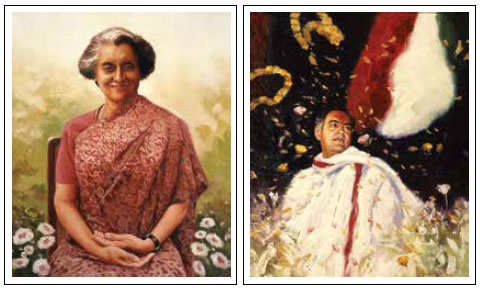 In my recent work I am focussing more on these shapes and apart from these, there is no other element in my work. There is a domination of huge triangles and sometimes some unusual forms are also appearing through the experiments. In my earlier work, bright colours were not welcome, and my weakness for brown, green and indigo was reflected. Since for years I pursued realism, my colours were very much close to nature. In this recent series I painted in black vigorously, to bring volume and weight to the compositions. Black has come to the forefront and it is taking up close to 75% of the spaces.
In my recent work I am focussing more on these shapes and apart from these, there is no other element in my work. There is a domination of huge triangles and sometimes some unusual forms are also appearing through the experiments. In my earlier work, bright colours were not welcome, and my weakness for brown, green and indigo was reflected. Since for years I pursued realism, my colours were very much close to nature. In this recent series I painted in black vigorously, to bring volume and weight to the compositions. Black has come to the forefront and it is taking up close to 75% of the spaces.
What made you experiment on these lines?
In fact, I started these works because I felt like bringing in a change. I was doing these works out of curiosity, and did not have exhibiting them on my mind. One day, a gallerist visited my studio and showed huge interest in them, and on that very moment she called up Visual Arts Gallery office and booked the gallery. The exhibition of this recent body of work has been fixed for this coming September.
Tell us about some recent accomplishments for your work?
Every year ABP Ananda announces an Award called “Sera Bangali” for Bengali personalities who are achievers in their respective fields. I received this award for painting. It was a nice experience going to the award ceremony in Kolkata.
Very recently, Yogish Agarwal, founder of Bleu Pharma and a businessman of repute in Romania, invited me there, and I was presented a certificate of excellence by Ambassador Vasile Sofineti. Yogish Agarwal has got 600 editions of my paintings printed, and those are adorning the walls of the houses of very important people.
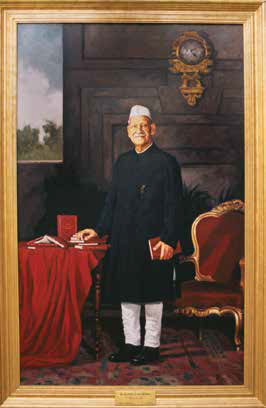 People still recall your portrait of Rajiv Gandhi. Can you recount this again for us?
People still recall your portrait of Rajiv Gandhi. Can you recount this again for us?
In 1994 I had painted a series on Rajiv Gandhi. Initially I did a portrait of him on my own which was taken to 10 Janpath to be shown to Sonia ji. The very next day she called me and showed many portraits of Rajiv Gandhi done by the artists from all over the world, showing an appreciation for my work. Thereafter, she requested me to do a whole series on the late prime minister. I did 15 canvases on different aspects of his life; these were later exhibited at the National Gallery of Modern Art.
You other famous personalities that you did portraits for?
I painted President Shankar Dayal Sharma’s life-size portrait for Rashtrapati Bhavan in 1995. Again, I was given the opportunity to paint a life-size portrait of President K.R. Narayanan for Rashtrapati Bhavan.
If I remember right, you did a series on Rajiv Gandhi for other collections?
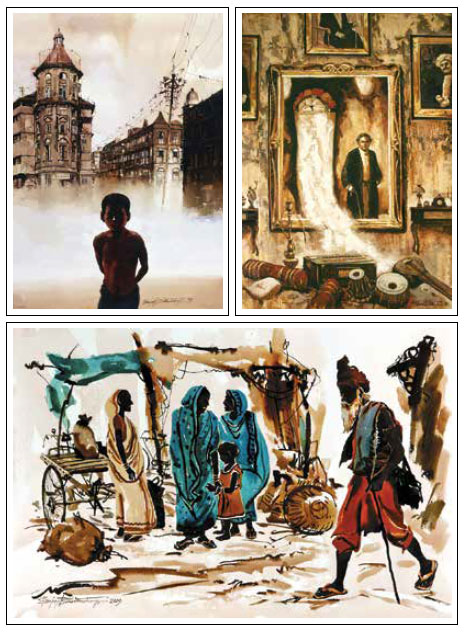 Yes, I did one on him for India House, London commissioned by Sonia ji, and another for the Rajiv Gandhi Government School, Slacq, Mauritius. Another portrait is in Shri Sonia Gandhi’s collection which has been transcribed in glass mosaic and installed in Sri Perumbudur. Incidentally, I have also painted Shrimati Indira Gandhi’s portraits commissioned by Shrimati Sonia Gandhi for Indira Gandhi Memorial Trust, Indira Gandhi Memorial Hospital (Maldives), Oxford University (London).
Yes, I did one on him for India House, London commissioned by Sonia ji, and another for the Rajiv Gandhi Government School, Slacq, Mauritius. Another portrait is in Shri Sonia Gandhi’s collection which has been transcribed in glass mosaic and installed in Sri Perumbudur. Incidentally, I have also painted Shrimati Indira Gandhi’s portraits commissioned by Shrimati Sonia Gandhi for Indira Gandhi Memorial Trust, Indira Gandhi Memorial Hospital (Maldives), Oxford University (London).
Other prominent locations that have your imprint? Like in some of the hotels?
There are many important places where my works are displayed including Neemrana Fort palace, ITC Hotels, The Lalit (New Delhi), Parliament House, Jawahar Bhavan, World Bank, Aakash Bhavan (Delhi), The Lalit (Mumbai), and St. John’s School (Cambridge, UK).
My works can also be seen in ITC Royal Bengal (Kolkata), ITC Maurya Sheraton (New Delhi), ITC Sonar (Kolkata), the Blue Pharma Collection in London, in 10 Janpath (in the collection of Shrimati Sonia Gandhi), in Neemrana Fort Palace and at Tijara Fort.
So, is your love for photography over and done with?
No, not at all. For six years now, I have also been devoting my time to photography. Initially, I picked up the camera, not to become a photographer, but to break the monotony of my studio-based practice. Lately I have become addicted to the camera. There are things that I cannot express in my paintings, and the camera has given me the language to express that. I try my best to create a painting through the camera. I had my photography shows in Delhi, Mumbai, New York and other places in India and abroad.
How much awards matter to you, as a creative person?
I have never pursued awards in my life. Even then, throughout my journey I have enjoyed an overwhelming response from my colleagues, galleries and art connoisseurs.
Looking at the overall picture, how is ‘art’ happening in your personal estimation?
At one point of time the art scenario was low profile, and few painters used to survive doing art full-time. Even the very well-known painters had jobs as art-teachers in school, and a lucky few used to be professors in art colleges. There were very few institutional galleries and three to four commercial galleries. The painters suffered a lot financially. In fact, it was difficult for them to exhibit their work. But the forerunners in our field produced brilliant works and they left behind a legacy. In my time I have seen professors in college like Bikash Bhattacharjee, Ganesh Haloi and Lalu Prasad Shaw travel by trams in second class. I still remember Bikash Bhattacharjee buying a refrigerator at 40 years of age, and that was big news in our college.

In contrast today’s contemporary painters are getting numerous opportunities. Commercial galleries have mushroomed. Many industrialists are sponsoring art exhibitions. The media is taking a lot of initiative to project art to society. Auction houses are selling works for crores. But in spite of this favourable situation, some of the top painters have assistants at their studio, the reason being lack of time to paint, since it is used up in trying to grab the new opportunities that have opened.
What is the downside of this?
My question is – What sort of future picture are they drawing in front of the artists of the new generation? What sort of inspiration will they get out of it?
When I think about the likes of Nandalal Bose and Ramkinkar Baij, it becomes very difficult for me to believe that they would have compromised on quality to join the bandwagon. I believe the hard work and the honesty are the only adornments of a good painter.
There are many big trends that are joining the river of mainstream art like tributaries. The newly opened Nita Mukesh Ambani Cultural Centre is the biggest example. A few years back it was unbelievable that this sort of cultural centre would open up in India. Apart from that, many government museums are coming up. Along with that many private museums are coming forward to support art. Our community is thankful to these patrons and I know their intentions are the best. But I am afraid, dishonesty persists in some disguise or the other.
How would you sum up the ‘art’ scene? What is your take?
I would like to conclude by saying that many painters of our community have become “multi-talented.” A painter who does not know moulding, casting or any other sculptural techniques is producing sculptural works as if off the conveyor belt. Basically, they give the drawing to a person who is a technical expert, and it is he who produces the work with his ability, and finally the painter signs on it claiming the work to be his. When there was no opportunity for the painters, they have produced a number of incredible works. And now in spite of all the opportunities, we are heading towards embracing mediocrity.
ABOUT THE AUTHOR
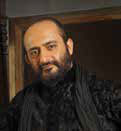 Sanjay Bhattacharya is an eminent painter and photographer. His works can be seen in important public and private collections in India and overseas.
Sanjay Bhattacharya is an eminent painter and photographer. His works can be seen in important public and private collections in India and overseas.

